




| Common Kingfisher (Alcedo atthis (Linnaeus, 1758)) |





|
|
Scientific name: Alcedo atthis (Linnaeus, 1758) Common name: Common Kingfisher Other names: Eurasian Kingfisher or River Kingfisher. French name: Martin-pêcheur d'Europe Order: Coraciiformes Family: Alcedinidae Size: Body size: 16 to 17 cm; Wingspan: 24 to 26 cm; Weight : 40 to 45 g Habitat: Clear, still or slow-running shallow water, with trees which can be used to perch on the bank. Food: Mainly small fishes detected from a perching location or during a stationary flight. Preys are caught by a vertical dive under water. Then the Common Kingfisher flies back to perch on a branch where it hits its prey before swallowing it. It may also catch some insects, crustaceans or amphibians. Nesting: The nest is a burrow dug on the river bank. There are 2 or 3 broods of 6 or 7 eggs between April and July. The female lays the eggs after a nuptial display where the male offers a fish to the female. Migration: Sedentary in regions where the climate is not too cold in winter. Populations living in areas where water is frozen in winter move towards estuaries, sea coasts or southwards. Geographic area: Europe, Asia east to Japan. North Africa south to the Sub-Saharan region. |
The Common Kingfisher has a short compact body. The upper side is bright metallic green-blue with a paler area on the middle. The underside is orange. There are white, blue and orange bands on the sides of the head. The male's bill is black, long and pointed. You can recognize the female with its orange black-tipped lower mandible. The legs are red. Juveniles are a duller colour. The Common Kingfisher has a fast direct low-on-water flight. Its call is a short sharp whistle. This is often the first noticeable indication of its presence. |
| [To know more about the Common Kingfisher] [Next picture] [Top] |
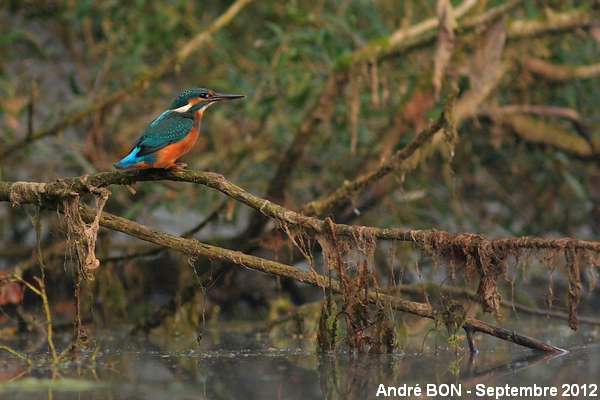
|
I have got the visit of this female European Kingfisher while I was trying my floating hut for the second times. It is impossible to go and observe these banks covered with vegetation using another mean. |
| [To know more about the Common Kingfisher] [Next picture] [Previous picture] [Top] |
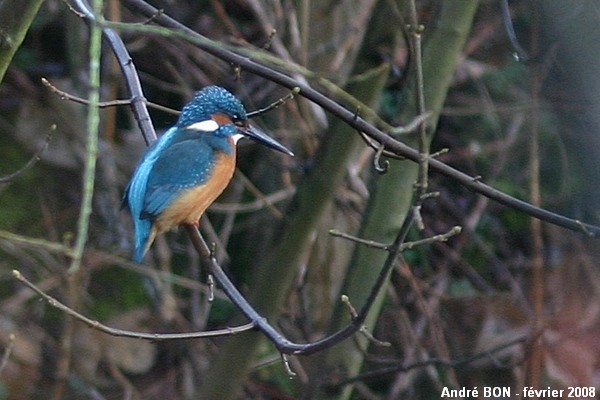
|
I have observed a Common Kingfisher on the banks of this small pond during several weeks. I have observed it at many different places and I have not found the ideal place to hide and wait. |
| [To know more about the Common Kingfisher] [Next picture] [Previous picture] [Top] |
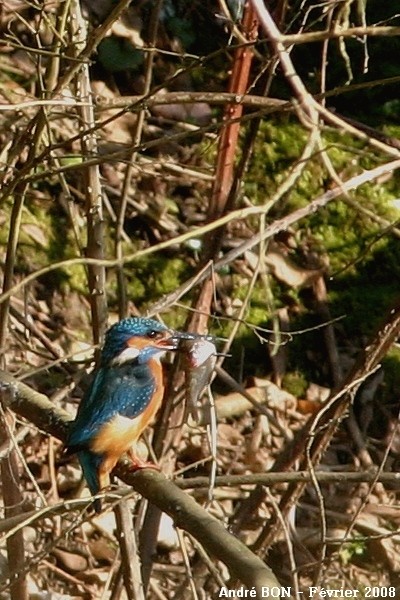
|
For my first series of pictures of Common Kingfisher, I have seen it coming back from fishing, through dense bushes. I saw the Common Kingfisher hit the fish on the branch, then put it in the right axis to swallow it. This scene was very interesting. But because of the distance and because of the vegetation, the pictures are not very good. Being naturally very optimistic, I am sure that, one day, I will shot a beautiful Common Kingfisher picture ;-) |
| [To know more about the Common Kingfisher] [Next picture] [Previous picture] [Top] |
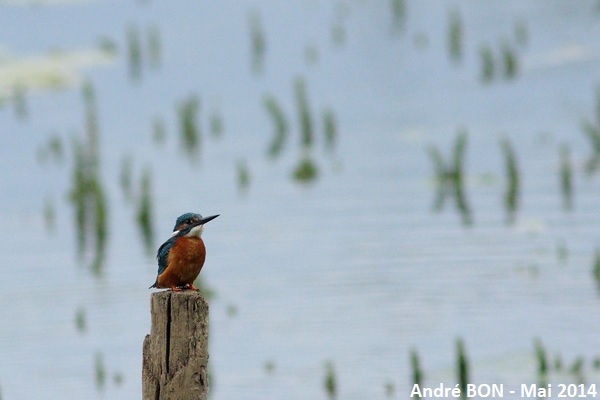
|
I am used to often observing Common Kingfishers in my native region of "basse vallée du Doubs" in France. I need to spend more time there to shoot beautiful pictures. |
| [To know more about the Common Kingfisher] [Previous picture] [Top] |
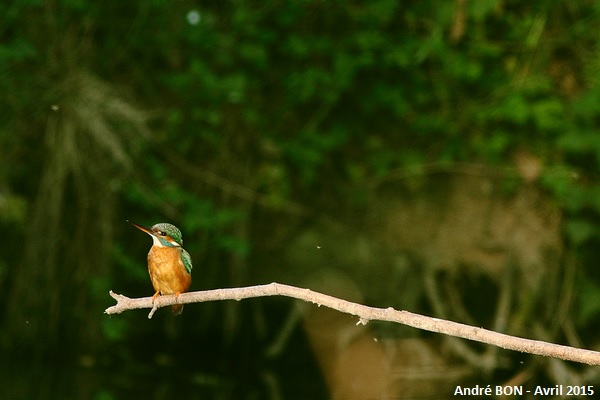
|
I have surprised, on several occasions during my regular jogging, a Common Kingfisher on the banks of the Bièvre river. It was perched on a branch certainly placed by a wildlife photographer. So I organized a morning photo session, trying to disturb as little as possible. I set my camera on a small tripod, not too close and hidden, and watched it all from far away with a radio remote to trigger. In fact, the nest is located just under the bank in front of the perch. I was able to attend several changes. One Kingfisher passes in rapid flight above the nest, signalling itself by a call. The one that is sitting on the eggs comes out on the perch and the first one comes back to replace it in the burrow. Having read that the slightest prolonged presence near the nest can destroy the brood, I did not return to the scene afterwards. Here is one of the photos shot during this session. The colour of the lower mandible indicates one female. |